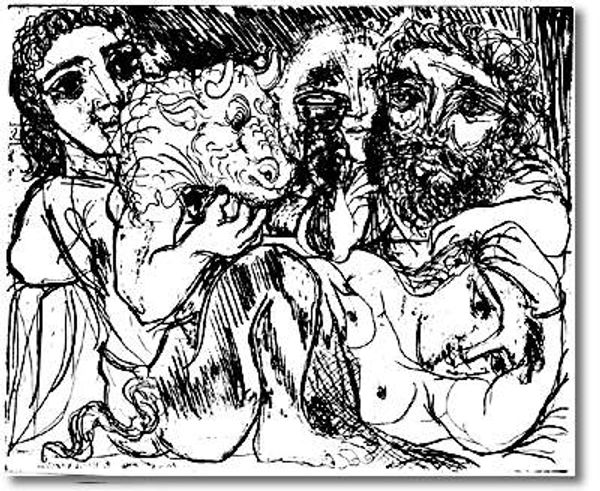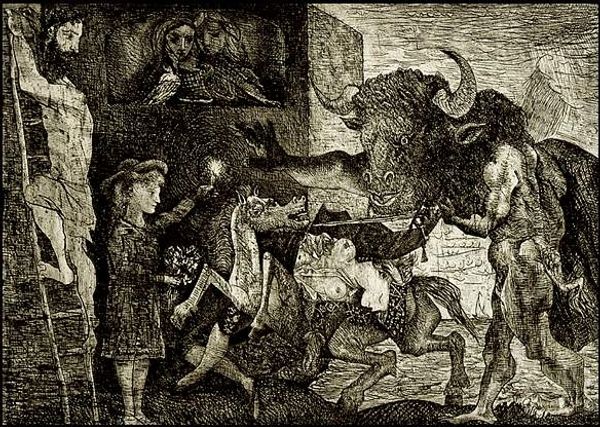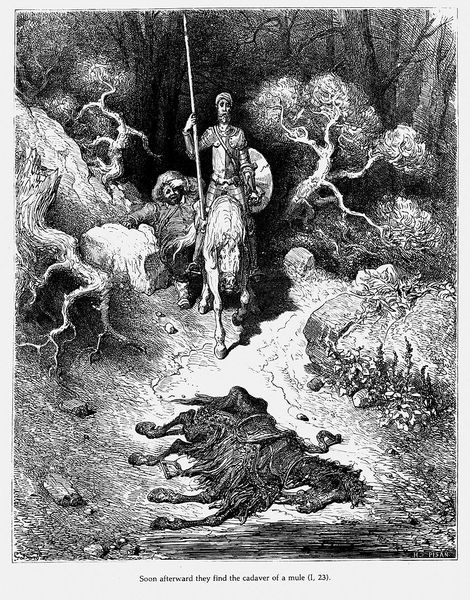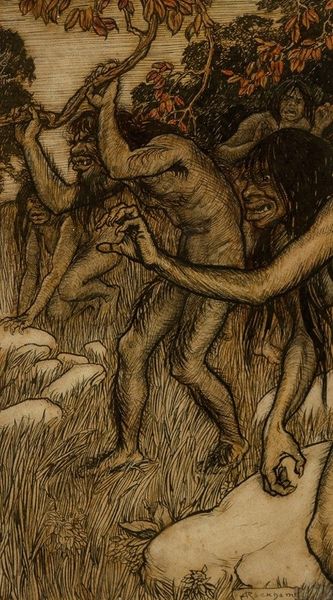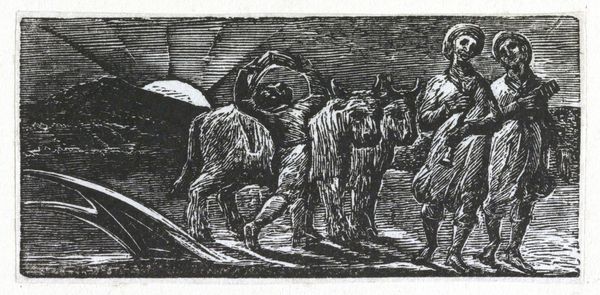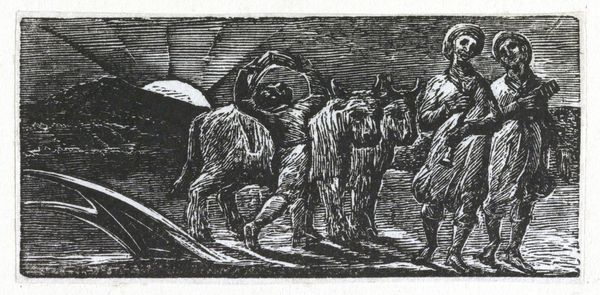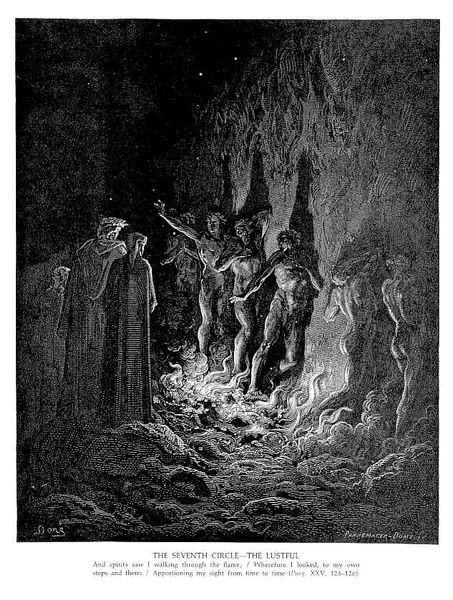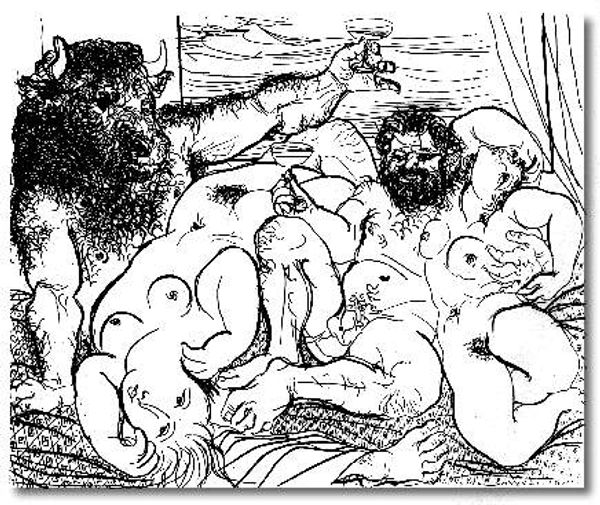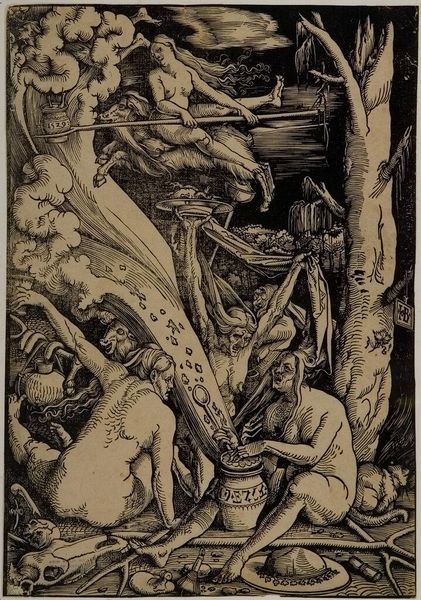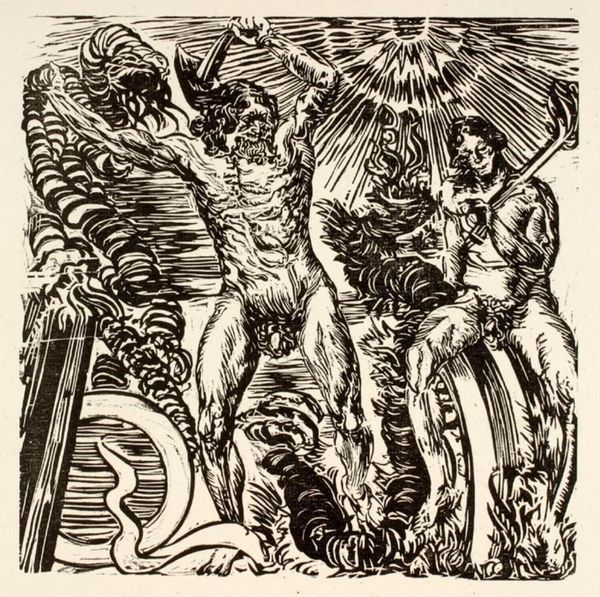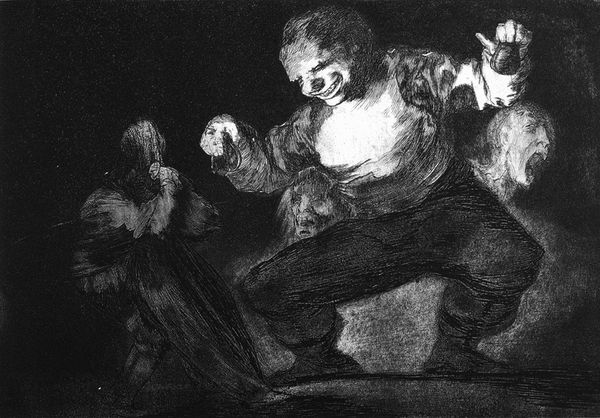
drawing, print, etching
#
portrait
#
drawing
# print
#
etching
#
crosshatching
#
figuration
#
detailed drawing
Copyright: Pablo Picasso,Fair Use
Curator: We are looking at an etching from 1970 by Pablo Picasso, simply titled "Untitled." The figures are rendered using bold, dense crosshatching, a classic printmaking technique. The whole composition appears rather confrontational. What strikes you most when you first see it? Editor: It’s the power dynamics between these figures that immediately grab me. There are three male figures in a way looming over one seated woman. Their intense expressions almost make them seem grotesque. And that mark-making - all that densely worked line – contributes to this agitated atmosphere. Curator: Absolutely. Let's delve into those lines. Look at how he manipulates the density to create light and shadow. The etching process allowed him to create countless prints. Each pull from the plate represents not only a copy, but the end result of manual labor: drawing with acid to create this scene on a copper or zinc plate that will eventually stain paper fibers with black ink to mass distribute this picture to people and other markets. I am also wondering, what is his level of exhaustion creating countless pictures after living 9 decades of creating pictures to mass consumer markets? Editor: Yes, those lines, as a symbolic gesture. Etching itself involves a kind of aggressive mark-making—the biting of the plate by acid. In this, one might say he is not only trying to draw the viewer into his mind, but perhaps some part of the woman that the man are imposing upon? Even so, each of the men has an individual, perhaps identifiable by his individual headgear and hair style. Curator: Considering it was created late in Picasso's life, that energy channeled into that technical production, which may say something to him processing himself? Or, about his ability to control the world he exists and manipulates as needed? To take this mass manufacturing production, and reassert or at least take into consideration who Picasso, the manufacturer, is during this whole ordeal of life. He really plays around and asserts that power when others probably cannot and are bound by limitations imposed by society. Editor: And even more importantly, as a creator, he is asking us to think about what are the meanings behind his work as symbols—beyond simply their making. His art isn't merely art objects but triggers for memories, emotions, associations within our individual and shared histories. Curator: And for me, this speaks volumes about his continued engagement with material production processes and consumption habits late in his career and that really highlights how his art becomes not merely the high art as you suggest, but, art *about* his existence. Editor: True! We’ve peeled back layers of meaning and materiality here today to gain a clearer understanding and relationship with art and production. Thanks!
Comments
No comments
Be the first to comment and join the conversation on the ultimate creative platform.
